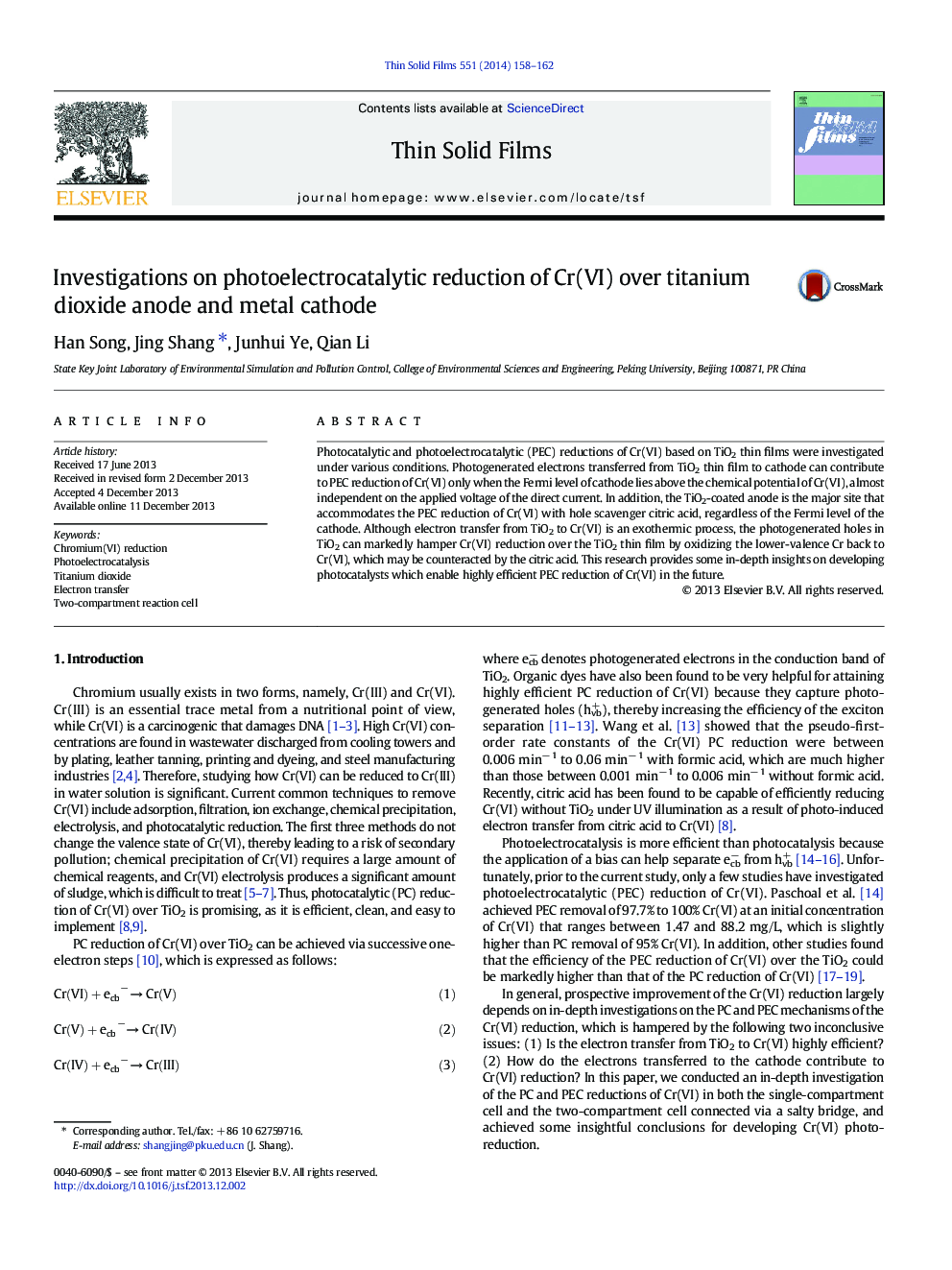| Article ID | Journal | Published Year | Pages | File Type |
|---|---|---|---|---|
| 1665608 | Thin Solid Films | 2014 | 5 Pages |
•Cr(VI) reduction on TiO2 photoanode is dominant with the addition of citric acid.•Cr(VI) is reduced on photocathode with Fermi level above Cr(VI) chemical potential.•Photogenerated holes can hamper Cr(VI) photoreduction over TiO2.
Photocatalytic and photoelectrocatalytic (PEC) reductions of Cr(VI) based on TiO2 thin films were investigated under various conditions. Photogenerated electrons transferred from TiO2 thin film to cathode can contribute to PEC reduction of Cr(VI) only when the Fermi level of cathode lies above the chemical potential of Cr(VI), almost independent on the applied voltage of the direct current. In addition, the TiO2-coated anode is the major site that accommodates the PEC reduction of Cr(VI) with hole scavenger citric acid, regardless of the Fermi level of the cathode. Although electron transfer from TiO2 to Cr(VI) is an exothermic process, the photogenerated holes in TiO2 can markedly hamper Cr(VI) reduction over the TiO2 thin film by oxidizing the lower-valence Cr back to Cr(VI), which may be counteracted by the citric acid. This research provides some in-depth insights on developing photocatalysts which enable highly efficient PEC reduction of Cr(VI) in the future.
